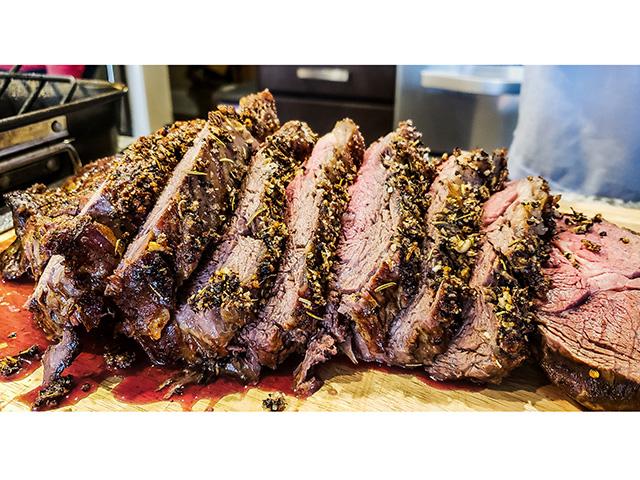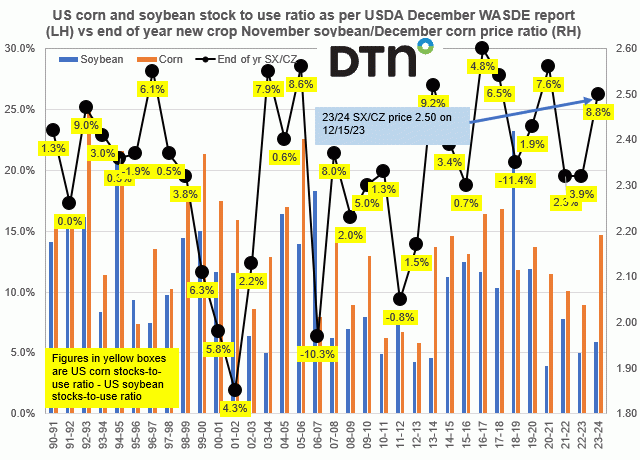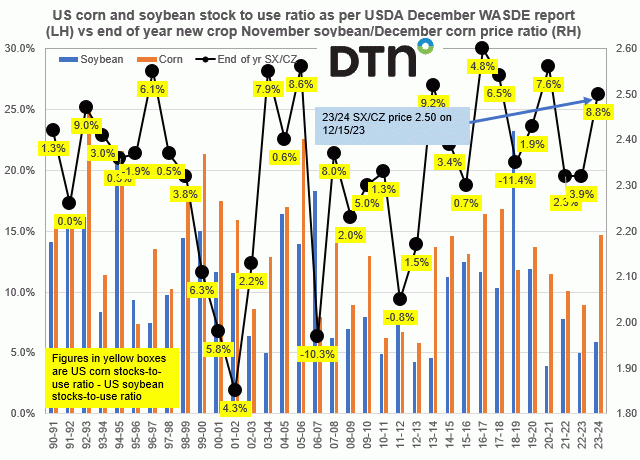Fundamentally Speaking
Soybean Crush Value Crashes
Soybean meal has been leading the grain and oilseeds complex higher over the past few weeks, taking out the prior peak set November 17 to trade this week at the loftiest levels since the start of June with the expiring December contract popping over the $400 level at its highest point since mid-May.
Depending on who you talk to, it is either unwinding of long oil-short meal spreads or the establishment of long meal-short oil spreads as soybean oil as a percent of the combined soybean crush value was as high as 49.2% on October 12, the third highest in history next to 57.4% in April of 1985 and 60.1% in June 1974.
Now two months later it has plunged to 39.1% based on CME values as this spread correcting from extremely high levels.
Soybean meal does have supporting factors including tight supplies, good demand, lack of lysine (upping inclusion rates in hogs) and a plunge in Canadian canola meal availability.
P[L1] D[0x0] M[300x250] OOP[F] ADUNIT[] T[]
Unwinding of this long oil share spread is a big reason for the surge in soybean meal which in turn has given soybeans a good bounce despite plunging soybean oil values to their lowest levels since June.
This chart shows the five, 15 and 25-year seasonals of soybean oil's share of the combined soybean crush value basis in central Illinois and what the long percent oil share has been doing in 2021.
The 15 and 25-year seasonals mirror each other quite well with the oil share trading around 36.5% from the start of the year to around the middle of April, then falls for the next two months.
Then there is a six-week rally until mid-August, another decline into mid-October and then the oil share again increases into the end of the year.
The five-year seasonal shows a wider range of values as the long oil share loses ground from the first of the year until the beginning of August, then appreciates to mid-September.
It sort of replicates the pattern seen in the 5 and 15-year seasonals by declining into mid-October and then the oil share again increases into the end of the year.
This year's pattern has been completely different as the oil share rallied strongly from the start of the year until early June, held steady at historically high levels of 50% or more of the combined crush value, peaked out at 53% as of mid-October and has fallen since.
What lies ahead for 2022 is unknown but a further decline in the oil percent share of the crush would be seen if it follows the five-year seasonal though more sideways action can be expected if the 15 and 25-year seasonal are observed.
(c) Copyright 2021 DTN, LLC. All rights reserved.






Comments
To comment, please Log In or Join our Community .